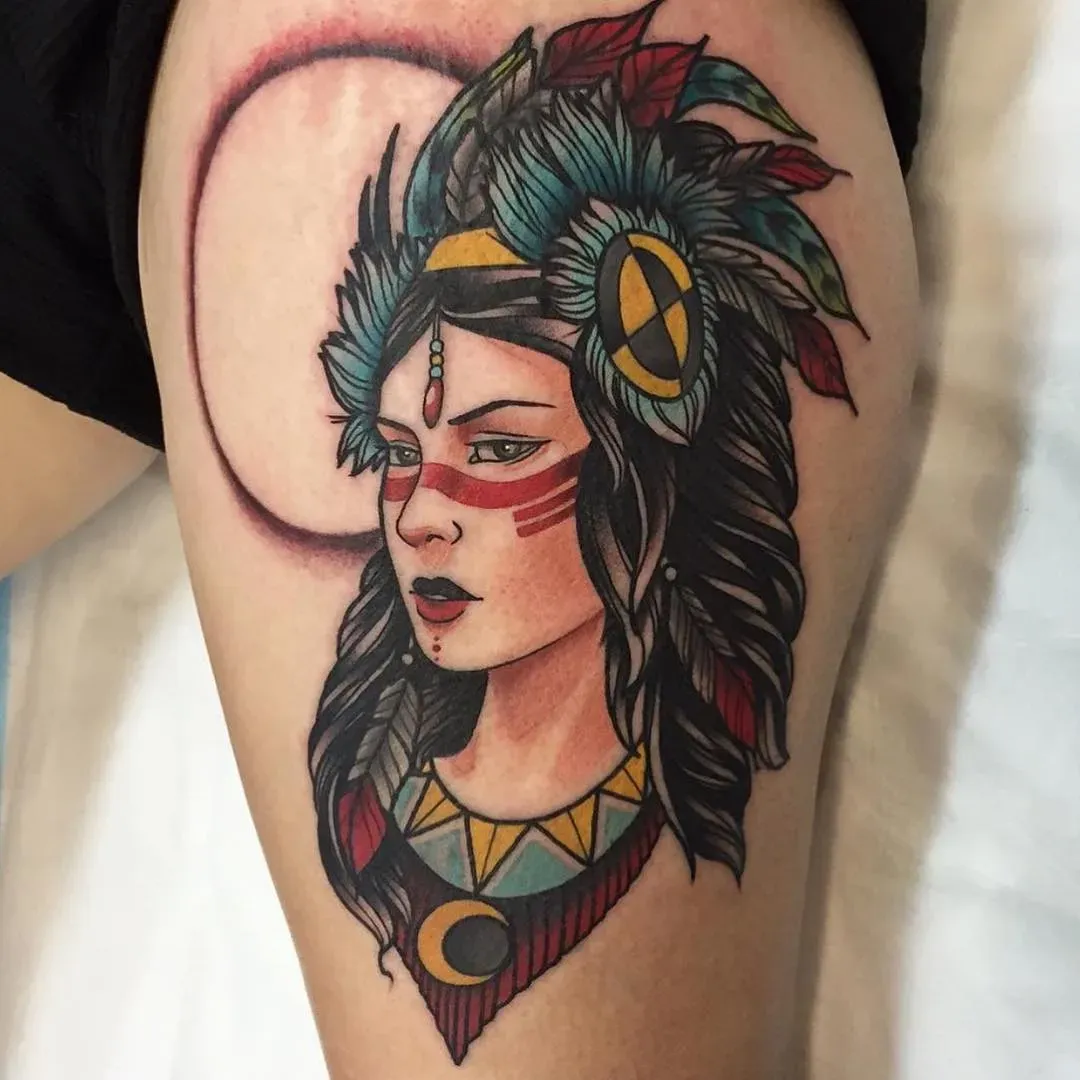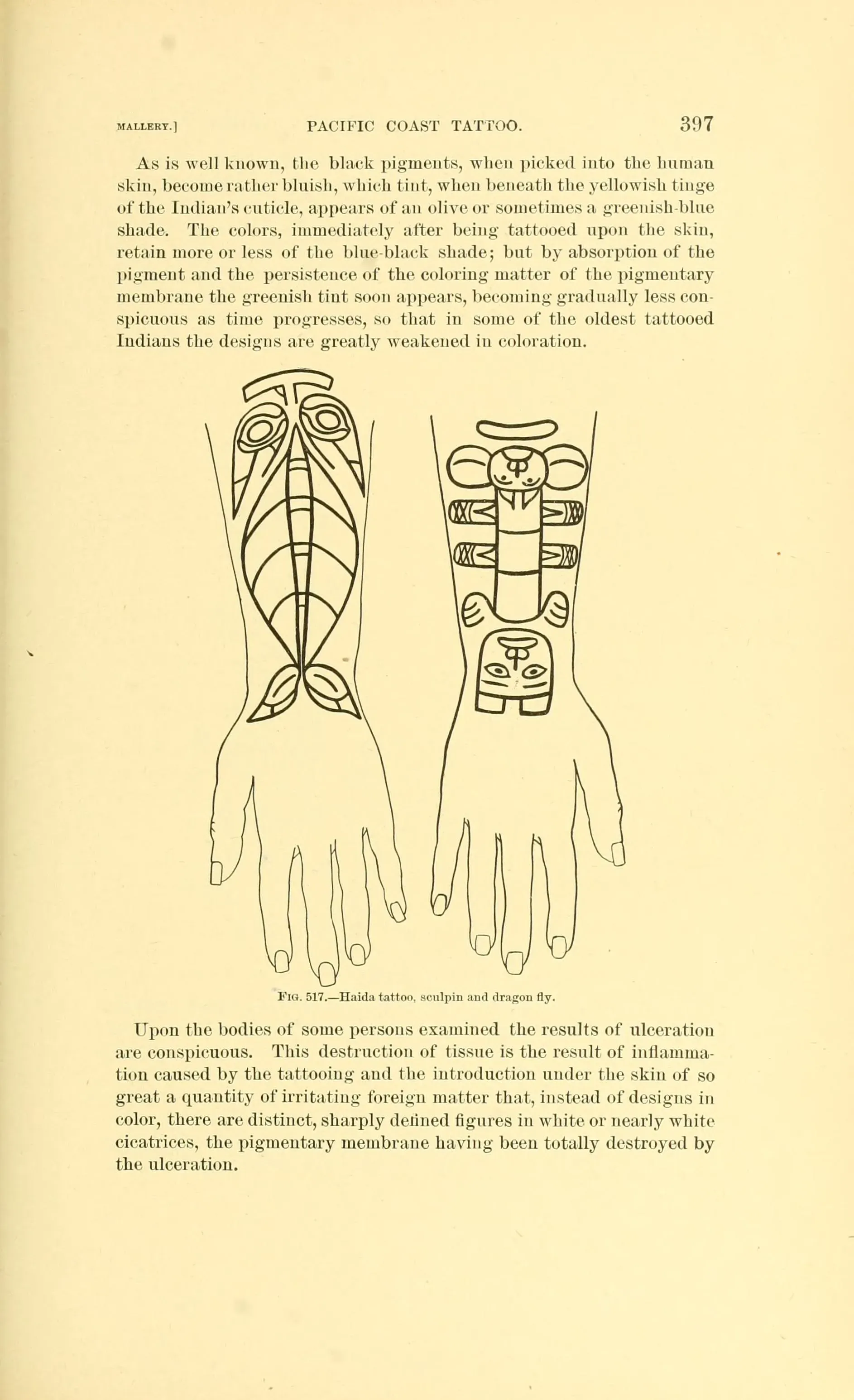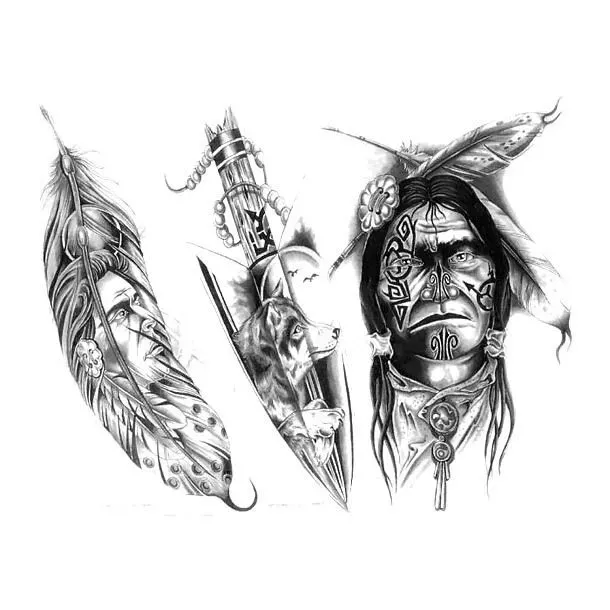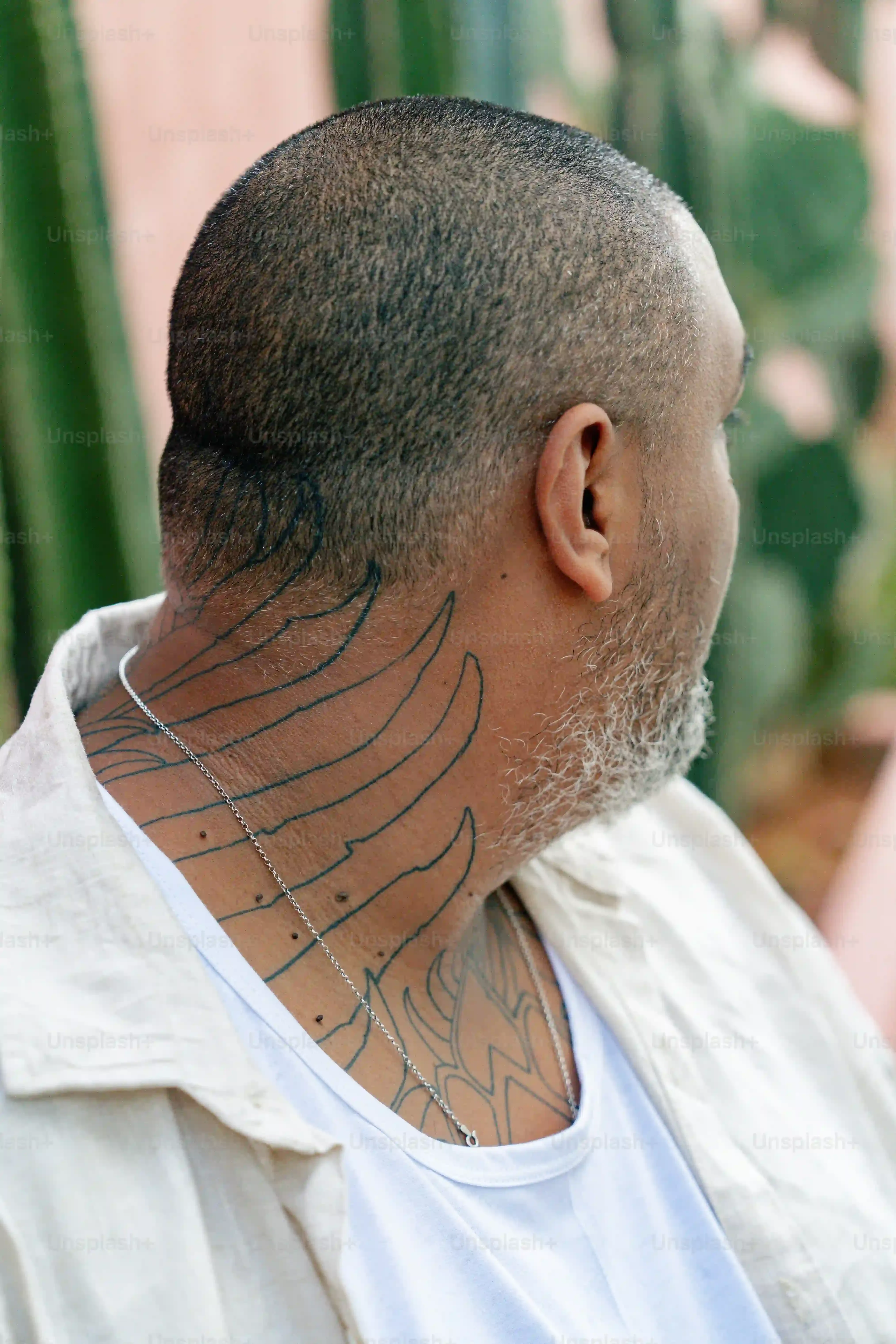Table of Contents
Getting a tattoo is a personal journey, a way to carry meaning on your skin. If you're captivated by the intricate patterns and deep history of South Asian art, you might be considering indian tattoo designs. It's a world far richer than just henna-inspired swirls, encompassing centuries of tradition, mythology, and diverse regional styles. Finding the right design can feel daunting. What do all those symbols mean? How do you translate ancient art into permanent ink? It's easy to get lost in the sheer volume of imagery available online. You want something authentic, something that speaks to you, not just a pretty picture copied off the internet without understanding its context. This guide cuts through the confusion. We'll explore the foundations of indian tattoo designs, decode some of the most common and powerful symbols, talk practicalities like where these designs look best on the body, and give you solid advice on working with a tattoo artist who respects the cultural origins. Prepare to look beyond the surface and understand the stories etched within these stunning works of art before you commit.
Understanding the Roots of Indian Tattoo Designs
Understanding the Roots of Indian Tattoo Designs
More Than Just Decoration: Ancient Ink Traditions
Man, diving into the history of indian tattoo designs is like opening a really old, fascinating book. People often think of India and maybe picture intricate henna, which is temporary. But permanent body art, or tattooing, has deep roots here too, stretching back centuries across different communities and regions. It wasn't always about looking cool, though that was part of it sometimes.
Often, these tattoos served serious purposes. They marked identity – showing which tribe or community someone belonged to. Sometimes they were protective charms, warding off evil spirits or illness. Other times, they signified life stages, achievements, or even spiritual devotion. Think of the tribal markings of the Adivasi communities, or the specific designs used in places like Rajasthan or parts of South India. Each line, dot, or symbol carried weight and told a story about the wearer's life and place in the world.
Regional Styles and Meanings
What's wild is how much the styles of indian tattoo designs vary depending on where you look. It's not one monolithic tradition. In some areas, you'd find simple geometric patterns, maybe dots or lines on the face or limbs. In others, like among the Konyak Nagas in the Northeast (though this practice is mostly gone now), the head-hunting warriors earned elaborate facial tattoos that were incredibly significant markers of bravery and status. Down South, you might see designs related to specific deities or religious symbols.
These designs weren't just randomly picked. They were passed down through generations, often applied by specific individuals within the community who held that knowledge. The tools and techniques varied too, from simple hand-poking methods using thorns or needles to more complex processes. Understanding the roots of Indian tattoo designs means appreciating this incredible diversity and the specific cultural context behind each style and symbol.
Here are some examples of traditional Indian tattoo purposes:
- Identity markers (tribe, community)
- Spiritual protection or devotion
- Healing or medicinal purposes
- Beautification
- Rite of passage or life stage marker
- Status or achievement symbols
Decoding Popular Symbols in Indian Tattoo Art
Decoding Popular Symbols in Indian Tattoo Art
Deities and Divine Imagery in Ink
Alright, so you're looking at indian tattoo designs and suddenly see all these faces and figures popping up. Often, these are deities from the vast Hindu pantheon, and choosing one for a tattoo is a big deal. It's not just about picking a cool-looking god or goddess; it's about connecting with their specific energy or what they represent. Take Ganesha, the elephant-headed god. People get Ganesha tattoos for removing obstacles, for wisdom, and new beginnings. Shiva, the destroyer and transformer, represents meditation, power, and the cycle of life and death. Lakshmi is all about wealth, prosperity, and good fortune. Each deity carries layers of meaning, stories, and specific iconography – the items they hold, their posture, the animals associated with them. Understanding these details helps you choose a design that truly resonates with your personal path or beliefs, making your indian tattoo design more than just ink.
Nature, Animals, and Geometric Patterns
Beyond the divine, a ton of indian tattoo designs draw from nature and geometric shapes, each with its own vibe. The lotus flower is huge – it grows from muddy water but blooms beautifully, symbolizing purity, spiritual awakening, and overcoming struggles. Peacocks, with their vibrant feathers, often represent beauty, immortality, and sometimes even royalty or pride. Animals like tigers or elephants can signify strength, power, or wisdom depending on the context. Then you have the geometric patterns, which might look purely decorative but often hold ancient significance, sometimes tied to cosmic order, protection, or specific regional tribal art. These aren't just random shapes; they're visual language passed down through generations. When you see these elements in indian tattoo designs, ask about their specific meaning to that style or region.
Common Symbols and Their Associations:
- Ganesha: Remover of obstacles, wisdom, new beginnings
- Shiva: Transformation, meditation, cosmic dance
- Lakshmi: Wealth, prosperity, good fortune
- Lotus Flower: Purity, spiritual growth, overcoming adversity
- Peacock: Beauty, immortality, sometimes pride
- Mandala: Universe, wholeness, meditation aid
Placement and Style Considerations for Indian Tattoo Designs
Placement and Style Considerations for Indian Tattoo Designs
Where Does It Fit? Thinking About Placement
so you've got some killer indian tattoo designs in mind, maybe a fierce Durga or a peaceful lotus. Now, where on your body does this masterpiece go? Placement isn't just about finding empty skin; it totally changes how the tattoo looks, how it flows with your body, and even how visible you want it to be. A delicate script mantra might look amazing running down your forearm, easily seen or covered up. A large, complex mandala design needs a flat, expansive canvas like the back or chest to really show off its detail. Think about the curves and lines of your body. A design that wraps around an arm or leg needs to be planned so it looks good from all angles, not distorted. And be real – some spots just hurt more than others. Ribs? Oof. But the result can be stunningly worth it for the right indian tattoo design.
Picking Your Vibe: Traditional vs. Modern Styles
Once you've got the design and a spot in mind, how do you want it to look? Indian tattoo designs aren't stuck in one era. You can go full-on traditional, maybe with bold lines and solid blackwork mimicking older tribal styles. Or you could lean into vibrant color, bringing deities and nature symbols to life with rich pigments, perhaps in a style influenced by Indian miniature paintings. Some folks prefer a more modern, illustrative approach, maybe combining traditional motifs with contemporary techniques like dotwork or fine line shading. Black and grey can give a design a classic, timeless feel, highlighting intricate details without the distraction of color. Your chosen style significantly impacts the final aesthetic of your indian tattoo design.
Here are some common placements for Indian tattoo designs and what works there:
- Back: Great for large, detailed pieces like mandalas or deity scenes.
- Forearm/Bicep: Good for script, smaller symbols, or wrap-around designs.
- Calf/Thigh: Versatile for medium to large designs, can be easily shown or hidden.
- Chest: Another spot for larger, central pieces, often chosen for significant symbols.
- Wrist/Ankle: Ideal for small, meaningful symbols or minimalist patterns.
Working with an Artist on Your Indian Tattoo Design Vision
Working with an Artist on Your Indian Tattoo Design Vision
Finding the Right Hand for Your Vision
so you've got your heart set on some killer indian tattoo designs, you understand some of the history, and you've got a spot picked out. Now comes perhaps the most critical step: finding an artist who can actually bring that vision to life. This isn't just about finding someone who can draw a straight line. You need an artist who either specializes in cultural designs, is deeply respectful and willing to research, or at the very least, is excited by the challenge and complexity these styles often demand. Look through portfolios. Do they have experience with intricate patterns, fine details, or cultural motifs? Have they done anything remotely similar to the indian tattoo designs you're considering? Don't be afraid to ask questions about their process, their comfort level with the specific imagery, and how they approach designs with significant cultural weight. A good artist will be stoked to collaborate and help you refine your idea, not just trace something from the internet.
Caring for Your New Indian Tattoo
Caring for Your New Indian Tattoo
so you've gone through the process, sat through the buzzing needle, and now you've got some stunning indian tattoo designs permanently etched onto your skin. Congrats! But the work isn't over. How you care for that fresh ink in the first few weeks is absolutely crucial to how it heals and looks for years to come. Skimping on aftercare isn't just risky; it's a surefire way to mess up that beautiful artwork you just invested in. We're talking potential fading, infection, or just a generally poor outcome. Your artist will give you specific instructions, and you need to follow them religiously. This usually involves keeping it clean with a mild, unscented soap, applying a thin layer of recommended ointment or lotion, and keeping it out of direct sunlight and away from dirty hands or surfaces. Don't listen to your buddy who swears by some weird home remedy; stick to the professional advice to protect your indian tattoo designs.
Your Ink, Your Story: Final Thoughts on Indian Tattoo Designs
Choosing an indian tattoo design isn't like picking a t-shirt pattern. We've covered the historical layers, unpacked some key symbols, discussed where these designs might sit best on your skin, and stressed the need for a skilled artist who gets it. The real work, though, is yours. Dive deep, ask questions, and make sure the imagery resonates beyond just looking cool. These designs carry weight, centuries of it. Treat that history with the respect it deserves. Your tattoo will be a permanent fixture, a piece of art with roots that stretch far back. Make sure it's a story you're proud to carry.